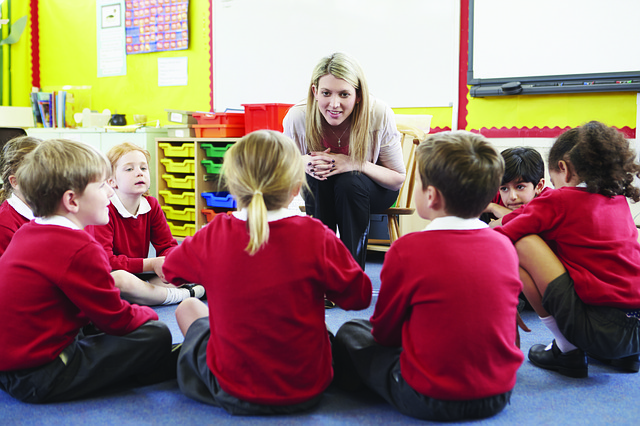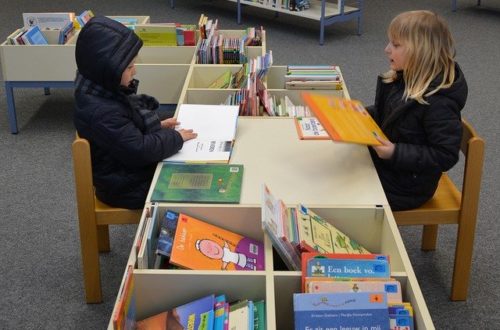A few weeks ago, after emerging from a multi-month bout with pneumonia, I decided to try cooking a recipe from one of my favorite contenders on Britain’s Best Home Cook. The first time I made the recipe, zucchini and sweet potato fritters with avocado to be exact, it was something of a disaster when it came to flipping the fritters in the boiling hot oil. Flecks of olive oil-coated sweet potato covered my walls, and I was down a frying pan. The fritters looked terrible, but they tasted incredible, and so I tried again with slightly better results. The fritters were still not holding together though. Did I need more flour? Arrow root? Was I not draining the zucchini enough? On my fourth attempt I discovered, upon re-reading the recipe, that I was misreading one of the key ingredients. I didn’t know a spring onion meant a scallion and not a regular onion. My fourth attempt went significantly better without all that extra moisture. Now on my eighth round, I’ve gotten the recipe down. I’m still working on my presentation, and certain details to make the dish look as good as it does in the picture.
Why am I describing sweet potato fritters––mouthwateringly good fritters–– on a reading blog? Well I’m going to use my experience making this recipe to frame a discussion about fluency.
Now, on the surface, cooking and reading fluency don’t seem to have a lot in common. It’s certainly not an exact parallel, I’ll grant you. However reading, much like cooking, is very like a recipe. You need to follow a certain structured sequence with the proper time spent on each step. The measurements correspond to frequency and duration of attention paid to each skill. If you do things out of order, or you try and multi-task, you will get some bad results. However, when each individual element is prepared just right and then combined with the others, everything holds together and creates something more than the sum of its parts. This is what is meant by “fluency.”
Fluency is one of the primary skills that allows reading to happen. After we transcend phonological skills and move into decoding words and building up phonics knowledge, we have fluency, the skill that bridges decoding and comprehension. It’s not as neat and clean as all that because fluency is defined as the ability to read with speed/automaticity, accuracy, prosody/expression, and comprehension. Most people assume fluent reading is just fast reading, and there are even speed-reading programs out there designed to boost reading rate. Speed, however, is more of an end result of being a fluent reader, rather than a causal element. It is more helpful to think of fluency as automaticity, or how well you have a particular skill mastered. While fluency is technically not the first skill people think of in the sequence of skills, the fact that it has its metaphorical fingers in several skill pies (e.g., phonemic awareness, sound-letter knowledge) means that it needs to be a part of the process along the way, woven into best practices.
If, for example, you are not fluent with your phonemes early on or, rather, you cannot look at a letter and know the sound it makes, you are not going to be a fluent decoder. If you are not a fluent decoder, you will be struggling through the decoding process when you read. Attempting to blend the sounds you don’t have down pat into words, and then knowing those words will be slow and painful. Labored decoding, and the subsequent attempts to read and re-read to make meaning, will inevitably mean you are fighting a battle on two fronts: you are decoding, and you are attempting to comprehend what you are decoding. What we’re talking about is a snowball effect, and this cumulative deficit is one that influences a great many students in their school careers, and on into adulthood. There is a corrosive nature to these deficits, meaning they don’t just influence your fluency, the problems tend to spread into other connected areas.
It is a well-established myth that the human brain can multi-task. We can certainly attempt to do several things at once, but our attention will be ping-ponging back and forth, and none of the tasks will really get accomplished fully.
I’ll bring in the fritters again. On my first attempt, I was hopping back and forth between preparing the sauces, and frying the fritters. My first batch of fritters were crumbly and burnt as a result. Without proper fluency, a student’s reading will be protracted and drawn out, and comprehension will be severely limited.
Cognitive neuroscientist Stanislas Dehaene describes the reading process in his book The Reading Brain. Bear with me for a moment while I go down the neuroscience rabbit hole. Using advanced imaging methods, Dehaene and his colleagues have been able to illuminate the circuitry of how our brain supports reading. Reading has, over the course of 5,000 years, changed the evolution of our species. From our earliest civilizations, in which the ability to decode a written language was rare, we’ve progressed to being almost entirely dependent on text and literacy for survival. Literacy is, without a doubt, a key factor in various societal disparities, and a marker of the haves and the have nots…those who can afford to help their children become well-educated, and know where to go and what to do, and those who cannot afford to begin that process or even know where to look for guidance.
Dehaene notes in his book that the expert reader taps different “routes,” or circuits, for familiar, routine text compared with text that is written in a less familiar way. This research makes it clear that learning the sounds and letter patterns that make up our written language requires repeated practice. To explain how reading can work in an organ that has evolved over thousands of years without man-made literacy, Dehaene proposes a theory of “neuronal recycling.” Essentially, our brains re-appropriate older circuits and repurpose their structure to make reading happen. But because these structures were not originally designed for the purpose of decoding text, these reading circuits have inherent structural constraints. For example, the areas of the brain that help us understand and produce spoken language are based primarily in the left hemisphere. Having our brain architecture limiting our intellectual capacity means that, for reading, the activity is really highly contained within a very unique and specific circuit. We do not have an unlimited capability, and the capability we do have is determined by how well we are trained to read early on. It is possible to enhance that capacity later, but it becomes progressively harder the more the brain settles into its patterns of activity. It has been noted that proper reading instruction early on really does change how the brain develops. There is a physical effect on the neural pathways.
I’m going to pull us somewhat out of the neuro-rabbit hole and get back to reading fluency. Reading fluency IS that repeated practice Dehaene mentions. It is the need we have to make our constrained brain circuits work efficiently.
When our reading circuits aren’t working efficiently, we would call that being disfluent. Even if other skills have come along, like decoding, comprehension, and phonological awareness, we cannot put the pieces of the reading puzzle together if those skills are not automatic.
Reading is an immensely complex process on the neuronal level, and getting all the moving pieces to flow properly requires a certain amount of speed. It’s no different than a clock with several gears holding up the ticking. A slow-moving clock won’t be all that useful for telling time. Fluency is the grease that keeps the gears moving.
To use another metaphor, think of the reading process as a book, appropriately enough. Let’s take this imaginary book’s spine to be working memory, or our immediate perceptual and linguistic processing, and the pages and binding of the book to be the other reading skills (decoding, phonological awareness, comprehension). Fluency is the glue that holds the different pieces together, and allows the book to function as intended. If you’re missing that glue in any amount, you’re going to have pages falling out, the cover won’t stay on, and you’ll have to work extra hard to keep the pieces from continually sliding out of your hands.
Despite how important fluency is for the reading process to function, very few programs address it. This skill is either saved for the very end of the process or, sometimes, ignored entirely as something that will occur naturally over time. But fluency must be taught as explicitly as the other skills, and it comes into play early on with the sounds, and continues to serve an important role throughout the development of young readers.
Students lacking the automaticity to utilize and combine skills often find themselves stuck holding parts of the whole without an easy, sure-fire way to make sense of the aspects of the code that they do have mastered to some degree. If a student is still pausing to consider if they’re looking at an A or an E, and having to ask which sound is needed to complete decoding a word, you’ll quickly see how important fluency is.
Unfortunately, it’s becoming very common for ninth graders to enter high school without a solid set of reading skills. While third grade is an important watershed year for reading and learning––for most people, it’s the move from learning to read to reading to learn––that transition from middle to high school is where we see the accumulation of our fluency snowball.
Until the end of middle school, students’ oral comprehension generally outpaces their decoding skills—that is, they can understand spoken language more complex than what they can read. In ninth grade, however, that shifts: suddenly, they are being assigned worked based on the assumption that their decoding skills are as sophisticated as their oral skills and, in the following years, the balance shifts even further in favor of written language as they are expected to engage with more complicated, nuanced texts.
But many struggling ninth graders, who are assumed to have acquired a good degree of skill in decoding, actually have a big glaring issue—a fluency deficit. Sometimes these deficits are the result of many holes in instruction joining together, and sometimes it’s a wider issue of simply never having explicit instruction in fluency all along the way. Either way, by eighth grade, these students have developed a significant deficit that needs to be filled before high school. Such a late term issue needs to be dealt with one way or another, and doing so in middle school is unpleasant, but not nearly as challenging as getting a high school student or an adult to engage with such a foundational skill. What we tend to see with disfluent middle schoolers, is a plateau, wherein gains come to a screeching, juttering halt, and all of birds come home to roost. Most students have either had the limited, and stunted experience of balanced literacy programming, based on the faulty assumption that early reading skills come about naturally (which we can see from work like Dehaene’s is not remotely true), or they have been working on their decoding and phonological skills in isolation, and without any attention paid to ensuring that those abilities are automatic.
Getting back to my fritters, I have spent a good number of weeks practicing the recipe. I’m able to make them faster each time I prepare the dish. I am not practicing every day because even I can’t eat that many fritters, but I am practicing the same skill repeatedly. I do the same with photography by practicing assembling my camera and, subsequently, in creating pleasing compositions.
The principle of practicing to get better at something is the same for really any skill. A good painter’s first painting is probably not going to be a Caravaggio or a Wyeth. That painter is going to need to learn brush technique before they can produce work that is both deft and quick. A skilled-carpenter or electrician has to practice their vocation many times over before they can build a house frame, or lay out an electric system quickly and efficiently. Much time is spent on learning styles and natural ability, but even the most natural of us has to practice and maintain that practice and repetition to achieve good results, and develop automaticity in the desired skill. Musical instruments, teaching children, medical practice, name any career and you are talking about hours of repeated practice.
There are some who say working on fluency is traumatic for kids, or, as whole language people like to say, “We should focus on the whole child.” Repeated readings, or checking rate over time (which is how we measure fluency) will cause them distress, apparently. Put in plain English, this is essentially suggesting that breaking a complex task down into simpler, more manageable steps and practicing them while being carefully monitored by an expert will make that skill HARDER rather than easier to master—an assertion that flies in the face of basic, observable reality, and that would be considered ludicrous if proposed in any other domain.
Think about that for a moment. Why should this be different for reading? We don’t consider drawing or dancing or soccer to be traumatic, and yet practice and repetition are par for the course with those activities. Shaun White didn’t learn to snowboard by doing it once, and Michael Phelps trained in the pool for hours before winning gold. But when academics are involved, suddenly all bets are off. It’s been clear for a long time that something is very wrong with the way reading is taught, but if we genuinely want things to change, we need to take a hard look at what actually works—and building fluency beyond a doubt does so. We owe it to students to get this right: their success in high school and beyond depends on it.
Dehaene, Stanislas. Reading in the Brain: The New Science of How We Read. New York: Penguin Books, 2010. Print.
For anyone interested in the fritter recipe





